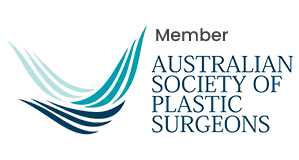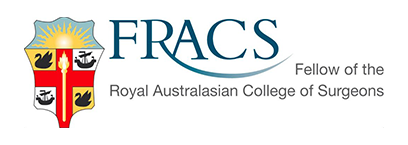Due to the personal nature of breast implant revision, an initial consultation is necessary for Dr Stewart to listen to your surgery goals and provide his clinical and surgical knowledge on how to achieve your desired results.
During this meeting, your medical history and any medications you are currently taking will be noted. You will also have the opportunity to express your concerns and reasons for seeking breast implant revision. Dr Stewart will then recommend a treatment plan tailored to your needs and outline what you can expect during and after the breast implant revision, as well as in the early recovery period.
At your second consultation Dr Stewart will review your implants if you are having a removal and replacement. Our team will order your implants to ensure they arrive at the Hospital ready for your surgery. Dr Stewart will also consent you for the surgery, this is a very good time to ask any questions that you may have regarding your surgery. We encourage you to bring a list of questions that you may have so that all of your concerns are addressed.
Breast implant removal and replacement, also known as breast implant revision, is a surgical procedure that involves removing existing implants and replacing them with new ones. This procedure can address a variety of medical and aesthetic concerns, such as:
Our patients seek an appointment with Dr Stewart to discuss the possibility of having their implants removed, or having them removed and replaced for various reason. This can sometimes be a difficult decision in women- especially in their later years with the uncertainty of what their breast shape will look like afterwards. Dr Stewart will gently guide you through your options after listening to your concerns. Implants don’t always need to be replaced and excellent results can be gained with no implant or simply a lift/mastopexy.
The old implants are removed through incision into the IMF, the new implants are inserted into the breast pockets. However, if breast revision augmentation involves removing the implant capsule (capsulectomy), your surgeon will remove this capsule before inserting the new implant. The new implant may have a different shape or size depending on what was discussed in your consultation. A larger implant may require expanding the pocket.
A general anaesthetic is required for this surgery. Your anaesthetist will be there every step of the way to ensure you are comfortable. If you have had any adverse reactions to anaesthetics in the past please let your Anaesthetist know prior to your surgery. If you are feeling anxious regarding your anaesthetic please do let our Practice Manager know if advance so that we can do all we can to support you.
After your surgery with Dr Nathan Stewart you will be sent to recovery. You will stay there for a couple of hours until your observations are all within range and you can then go home. Unless you have particular co-morbidities the normal discharge for this procedure is a day stay.
You may experience some discomfort on the first night, but you will be given pain management to make yourself feel comfortable. You will wake in your compression garments that you take to theatre, you will now be in these garments for 6 weeks, 24/7.
To have your bilateral implants removed with Dr Nathan Stewart it is upwards of $8000.00. Medicare’ MBS item number for this surgery is 45551 (per breast). You can check with your health fund prior to surgery if you are covered for this procedure. On top of this fee is an anaesthetist portion which will be given to you by your Anaesthetist once you book in for surgery.
The cost of having your implants removed and replaced starts at $10,000.00. The implant fee starts at $2010.00 and on top of this are Anaesthetist and Hospital fees. Your private health insurance will not cover this procedure as it is deemed cosmetic.
Potential risks include infection, bleeding, changes in nipple sensation, breast asymmetry, and scarring.
While the longevity of breast implant varies depending on the brand, placement and technique as well as the individual patient, in our clinic we have seen that a good time to replace implants that haven’t experience capsular contracture or implant rupture is 10 to 20 years. Our Clinic uses Motiva implants and your can research these implants on the Motiva website https://motiva.health/ please note that this is an American website and some of these prostheses we do not use as they are pending TGA approval. The current implants that we use are Ergonomix and Round.
Caring for your incisions during the healing process can help reduce the visibility of scarring. Dr Stewart will provide you with a pamphlet on scar management post operatively. In your patient care gift package that you will receive prior to surgery you will find a gel that is supported by clinical evidence to assist in the first part of your scar healing.
The term Breast Implant Illness has become popularized in recent years. It describes a constellation of symptoms which a patient describes that the breast implants having caused such as; fatigue, chest pain, hair loss, headaches chills, photosensitivity, rash and chronic pain. A lot of the symptoms of BII are associated with autoimmune and connective tissue disorders such as; lupus, rheumatoid arthritis and scleroderma. Currently there is not a diagnostic test for BII. If you are concerned about BII please discuss this with your surgeon or GP.
When you book in with Dr Stewart you will be provided with the TGA information of your breast prosthesis, this meets the AHPRA Guidelines for compliancy on breast augmentation.
Check to see if your implant is included in the Australian Register of Therapeutic Goods. You can find the TGA link at https://www.tga.gov.au/resources/resource/reference-material/breast-implants-things-consider.
Some people choose to remove their implants because of a change in breast shape due to pregnancy, breastfeeding, weight changes, or age.
Breast implant removal and replacement surgery is usually performed in one procedure, but may require two separate surgeries in some cases. The surgery is performed under general anaesthesia and takes about 1 to 3 hours.
After surgery, you can expect some swelling, bruising, and discomfort in the surgical area. You should wear a supportive bra to reduce swelling and support the new shape of your breasts. You should avoid strenuous activities, but gentle movements are encouraged.
Dr. Nathan Stewart is a fellow of the Royal Australasian College of Surgeons [FRACS] in Plastic and Reconstructive Surgery and a Consultant Specialist Plastic Surgeon. Contact Dr. Stewart and his team today to schedule an appointment.
Affiliations




After any kind of breast surgery, it is important you take as much time as you need to rest and recover after your breast implant removal surgery. You will be provided with a number of information sheets and checklists to prepare you for your recovery, including any symptoms to watch out for and tips to keep you as healthy and comfortable as possible during this time.
Following the procedure, you will likely experience some moderate discomfort, as well as bruising or tenderness. Dr Stewart will discuss your pain medication needs with you and tailor a dosage and schedule to suit your individual circumstances. Most symptoms will settle within 4 – 6 weeks.
Should you have any questions at any time, please don’t hesitate to contact Dr Stewart or the team!